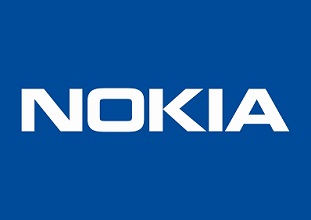Finland-based Nokia has created a customised ‘digital assistant’ to improve telecom operators’ efficiency by providing engineers faster access to critical information.
Powered by the Nokia AVA cognitive services platform and underpinned by Nokia’s services expertise, MIKA will provide voice-dictated automated assistance to reduce time spent searching information resources. This, says Nokia, will enable operators to focus on key business tasks without being distracted by the complexities of multi-technology network environments.
MIKA (short for Multi-purpose Intuitive Knowledge Assistant) is the first digital assistant ‘trained’ specifically for the telecom industry. It is designed to provide automated assistance that saves time and frees highly skilled workers to focus on critical tasks. Analysis by Nokia of working methods within a Network Operations Centre (NOC) has revealed that application of MIKA could ‘give back’ more than one hour of productive time every day to engineers by providing them with access to information and recommendations through the interactive user interface.
Automated learning and the knowledge library
MIKA combines augmented intelligence with automated learning to provide access to an extensive range of tools, documents and data sources. These include the Nokia AVA knowledge library, a repository of best practice gathered from Nokia projects around the world. Using the knowledge library MIKA can provide recommendations based on similar issues seen in other networks. MIKA is available via a web interface and mobile agent so that engineers can tap into its knowledge base, wherever they are.

Igor Leprince, head of Global Services at Nokia, said: “Finding the right information is a daily challenge for telco engineers tasked with boosting network quality. MIKA taps into the power of the Nokia AVA platform to provide quick and accurate answers, avoiding time wasted on fruitless searches. MIKA is customised to support the specific needs of telecoms, and can deliver recommendations based on experience from networks around the world.”
Predictive Repair warns 14 days ahead of failure
In addition to launching MIKA, Nokia has introduced Predictive Repair, a service that will enable operators to reduce costs and improve network quality by moving away from break–fix approaches to hardware maintenance. This care service can predict hardware failures and recommend replacements up to 14 days in advance, with up to 95% accuracy. These recommendations will allow operators to improve efficiency by avoiding unnecessary site visits, wasted operations efforts, excessive inventory, and false ‘No Fault Found’ returns.
According to the Espoo-based firm, Nokia Predictive Repair is the first service of its type in the telecommunications industry. It draws on Nokia’s deep hardware services expertise – correlating network, repair centre and factory data. By applying Nokia Bell Labs machine learning algorithms to predict failures, the focus is on high-runner modules that generate a significant share of customer repair transactions. The service is available to operators that use Nokia 3G and 4G equipment.
The Nokia MIKA Digital Assistant as a Service is now available for customer trials and was demonstrated at the recent Mobile World Congress 2017 in Barcelona. Nokia Predictive Repair will be available for customer trials this month.
Comment on this article below or via Twitter: @ VanillaPlus OR @jcvplus






